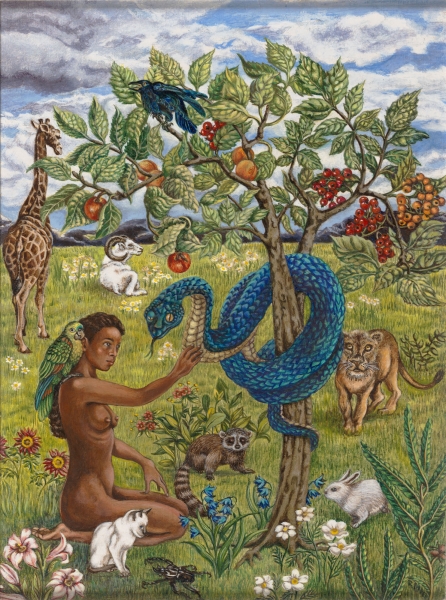While battling my way through the wall of rain and dodging hidden water mines, I couldn’t help but think “should I skip today?”. After much, much thought, I decided I will go to the Ackland Art Museum but only to keep my perfect attendance for the extra credit. It never once came to my mind that I might actually enjoy this experience at the art museum?. However, following the tours from both of our guides, I was surprisingly very pleased and intrigued by what we were shown. I knew that adaptations could take the form of paintings and pictures, but I never actually observed one myself. Between the two tours, I was able to dive deep into the painting and analyze what the story was trying to say. The two paintings that seemed to adapt the original and best portray a story were the paintings we saw upstairs adapting the famous “Adam and Eve” narrative.
The paintings adapting “Adam and Eve” may have been the most intriguing to me simply because they were taking ideas from a story I already knew. However, even if this was not the case, I think these works of art still depicted the most meaning. The first “Adam and Eve” painting appeared to tell the entire biblical story. I felt that anyone could look at the painting and at least get the general idea of “Adam and Eve”. The second adaptation considerably changed the original work with the exclusion of Adam and the portrayal of Eve with a darker skin tone. Even though the story here is much different, it offers a very strong meaning relating to African culture and their interpretation of the Bible.
Overall, my experience at the Ackland Art Museum taught me to look for the underlying meaning of visual art while also analyzing for potential adaptations of different works. Without this class at the art museum, I would likely have continued to quickly glance at artwork and only admire their appearances.

